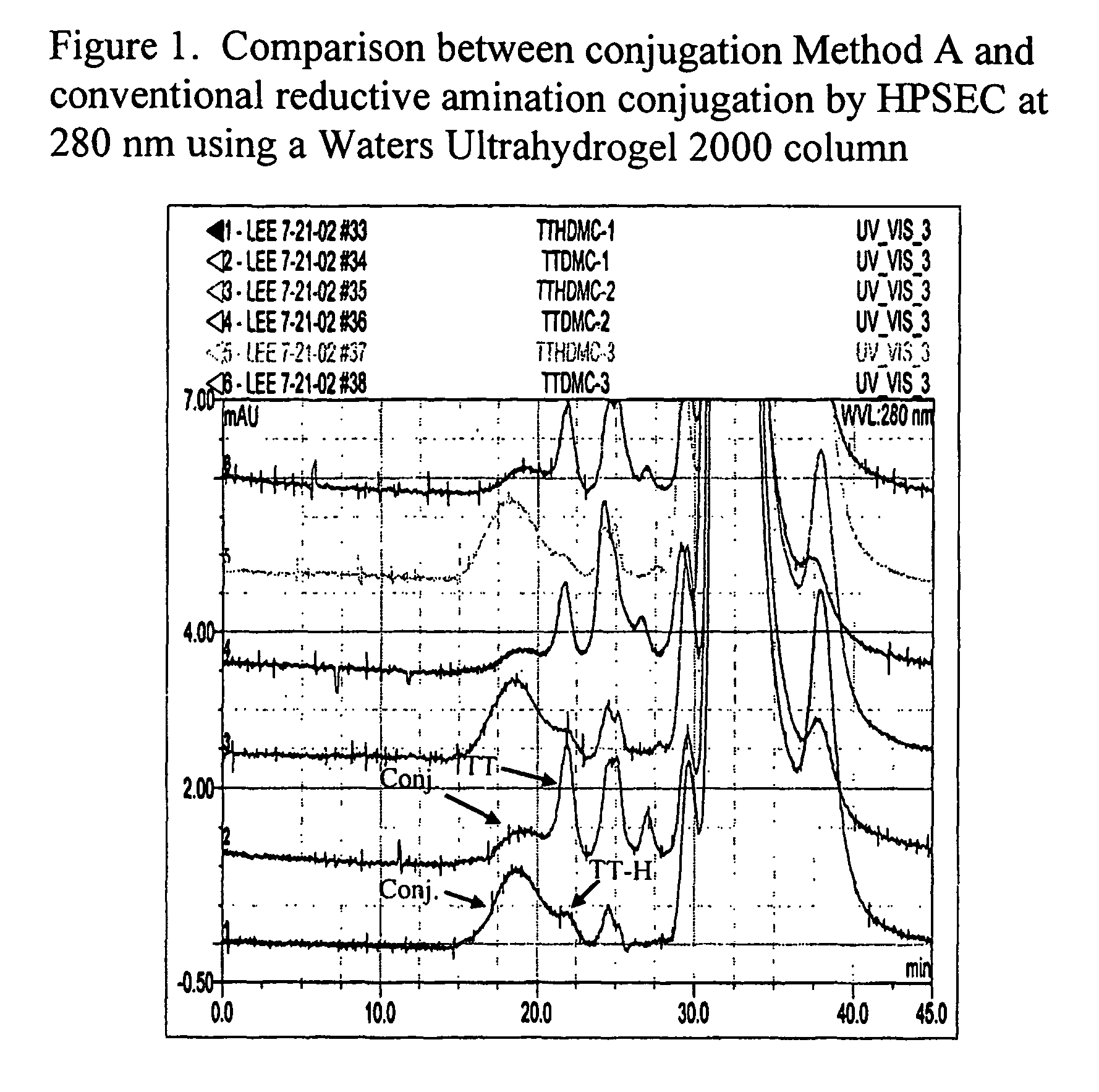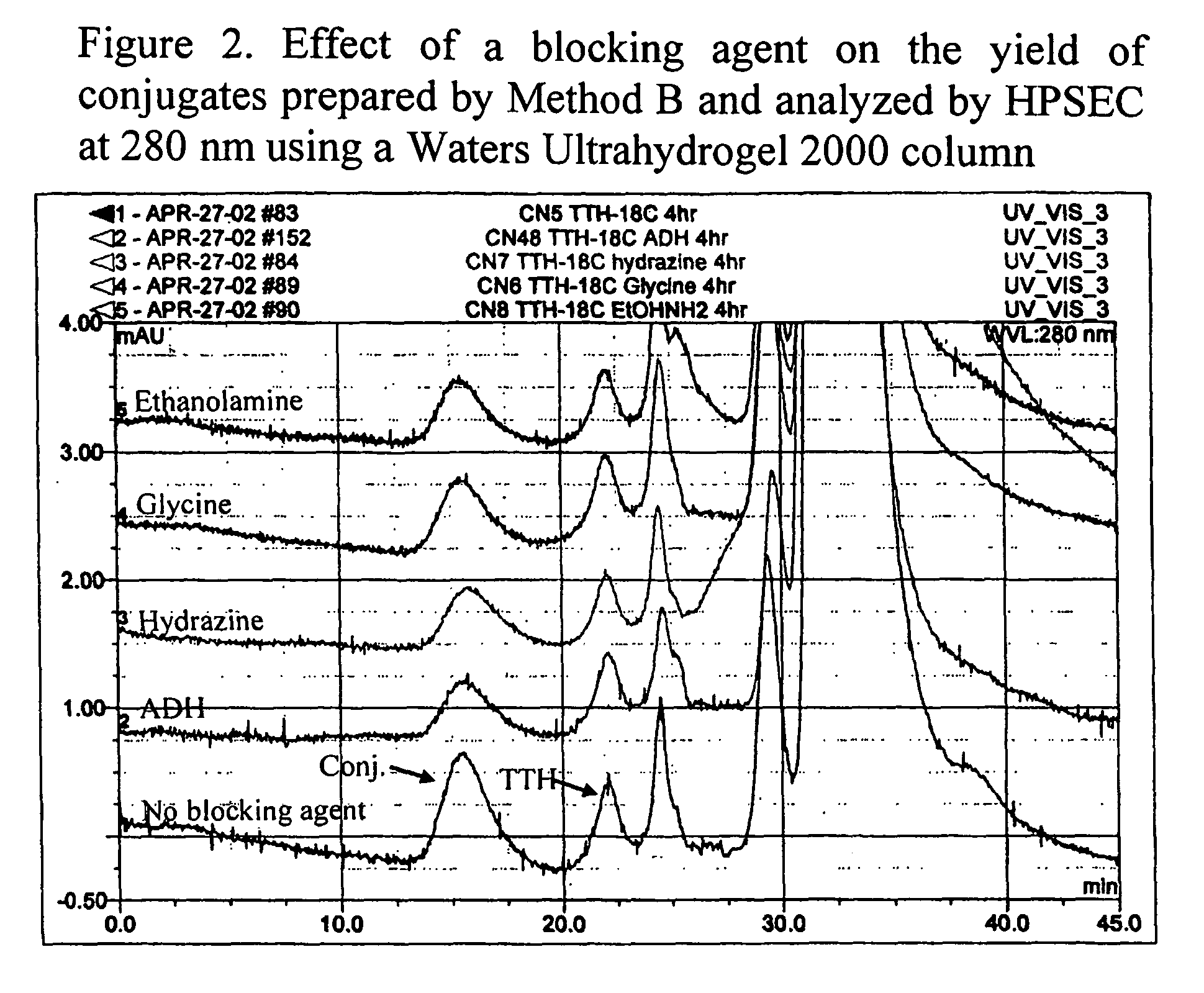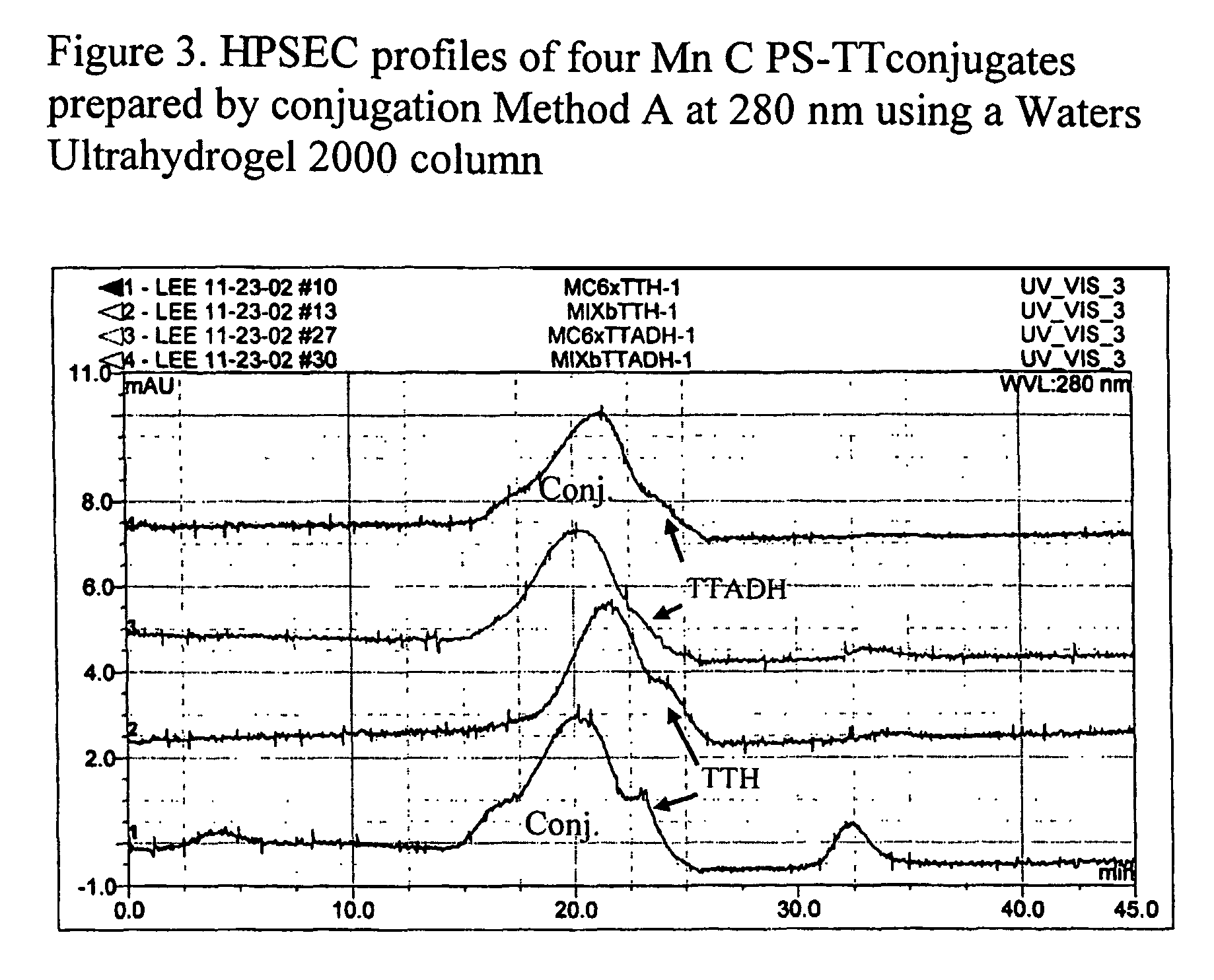Polysaccharide-protein conjugate vaccines
a polysaccharide and conjugate technology, applied in the field of polysaccharide-protein conjugate vaccines, can solve the problems of limited use of pss-based vaccines in young children, insufficient protection for adults, and limited number of amino groups available for conjugation, so as to reduce the production of undesired by-products, high yield, and rapid rate
- Summary
- Abstract
- Description
- Claims
- Application Information
AI Technical Summary
Benefits of technology
Problems solved by technology
Method used
Image
Examples
specific examples
[0134]Method A—Meningococcus Group C Conjugate
[0135]Activation of TT to Contain Hydrazide Groups
[0136]Tetanus toxoid (4.2 mg / mL) was activated with 0.42 M hydrazine or adipic acid dihydrazide in the presence of 20 mM EDC, 0.1 M MES, pH 6.5 at 20-24° C. After reacting for 4 hours, the pH of the reaction mixture was raised to 7.5-10 with 1 N NaOH to stop the reaction. The reaction mixture was buffer-exchanged with 30 mM NaCl, 3 mM Na2CO3, pH about 10.5 at 4° C. using a 12-14 KDa dialysis membrane. The protein concentration of the resulting TT-hydrazide sample was determined by Lowry assay (see Pierce Catalog 2003-2004, page 306) using bovine serum albumin as a standard. The hydrazide content was determined by TNBS assay using adipic acid dihydrazide as a standard, as described in Vidal, J. Immunol. Methods 1986; 86:155-156. The degree of activation of TT so prepared was approximately 50 hydrazide groups per TT molecule.
[0137]Activation of Mn C PS to Contain Aldehyde Groups
[0138]Mn C P...
PUM
| Property | Measurement | Unit |
|---|---|---|
| pH | aaaaa | aaaaa |
| concentrations | aaaaa | aaaaa |
| pH | aaaaa | aaaaa |
Abstract
Description
Claims
Application Information
 Login to View More
Login to View More - R&D
- Intellectual Property
- Life Sciences
- Materials
- Tech Scout
- Unparalleled Data Quality
- Higher Quality Content
- 60% Fewer Hallucinations
Browse by: Latest US Patents, China's latest patents, Technical Efficacy Thesaurus, Application Domain, Technology Topic, Popular Technical Reports.
© 2025 PatSnap. All rights reserved.Legal|Privacy policy|Modern Slavery Act Transparency Statement|Sitemap|About US| Contact US: help@patsnap.com



